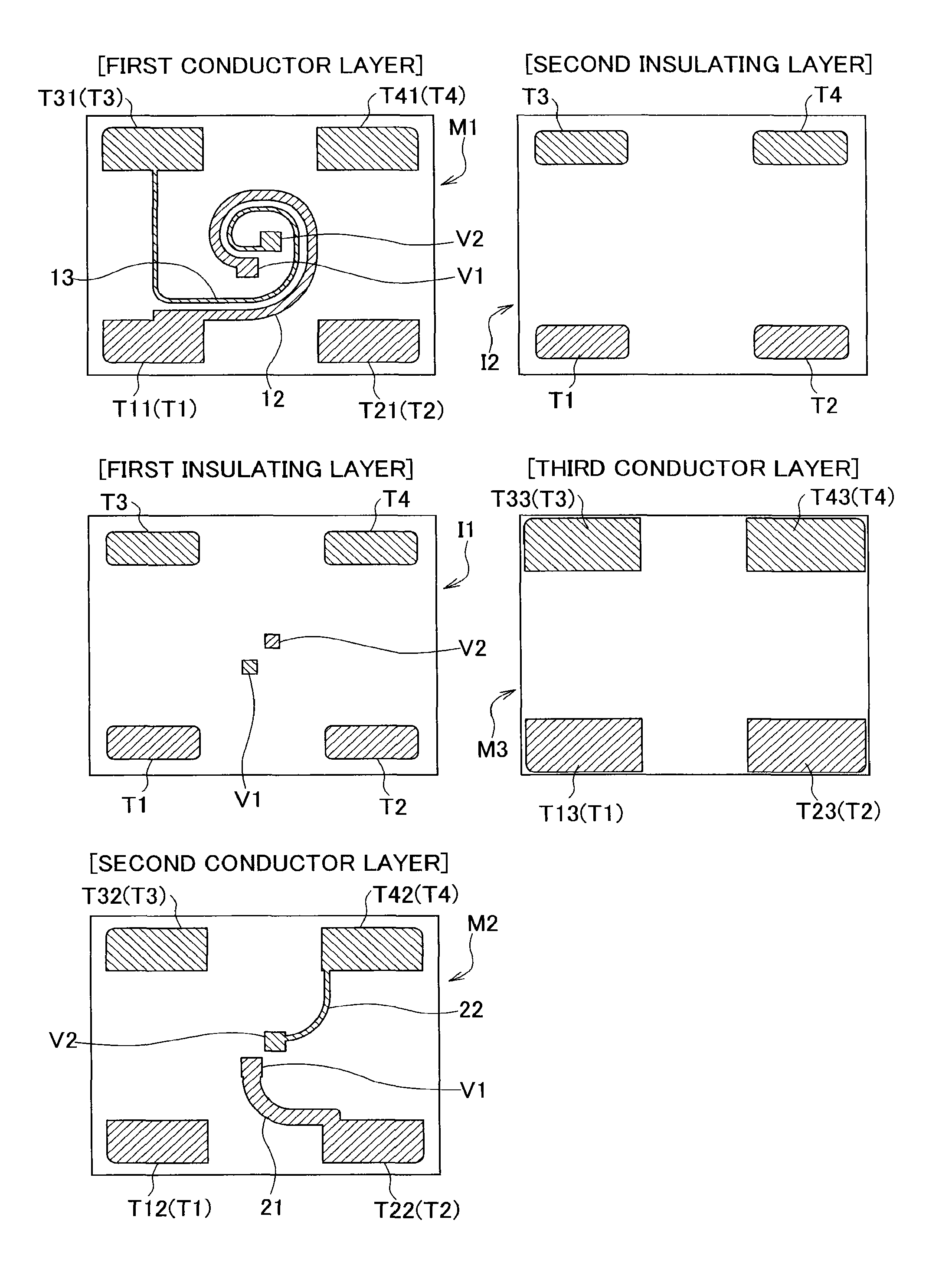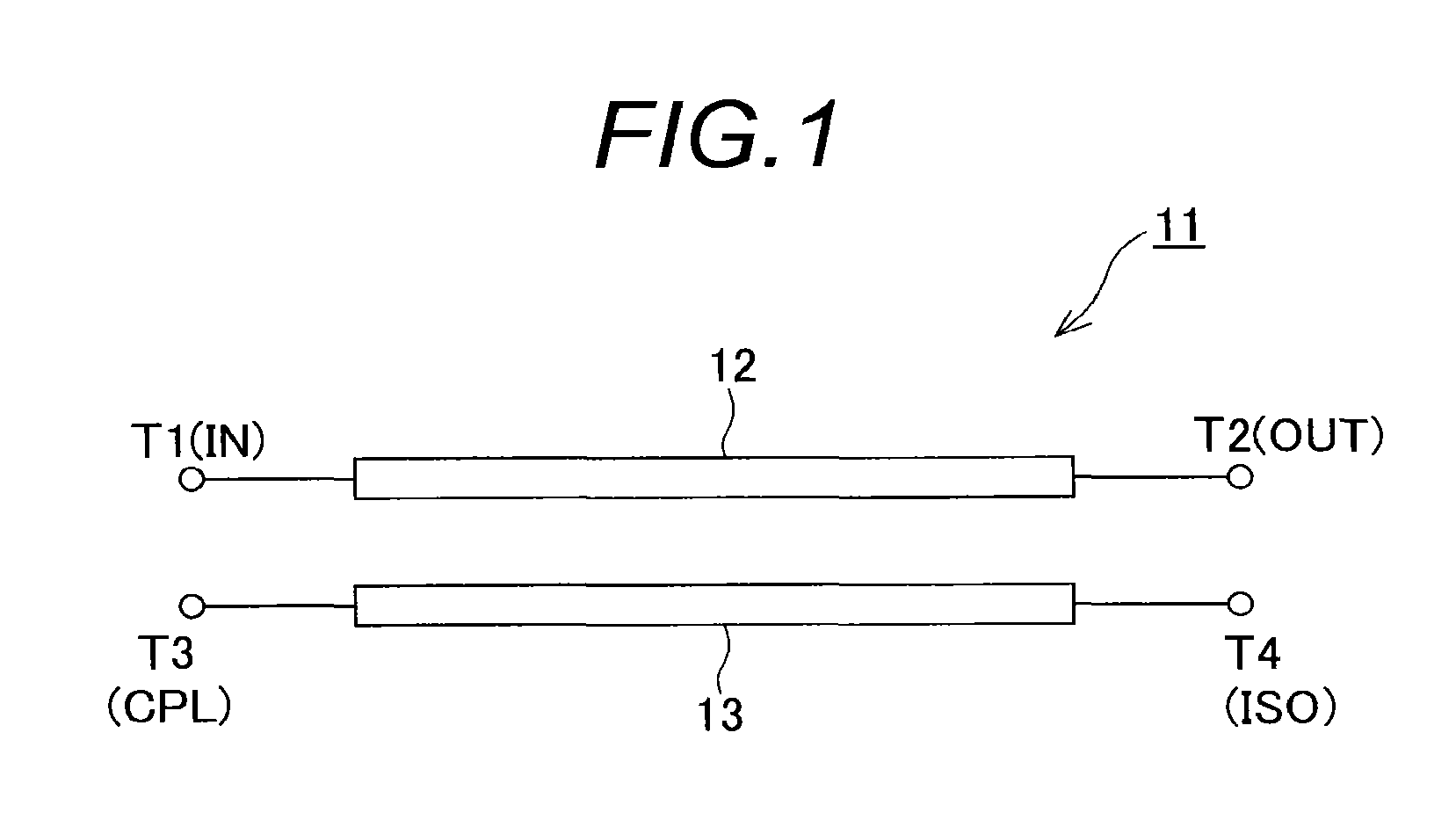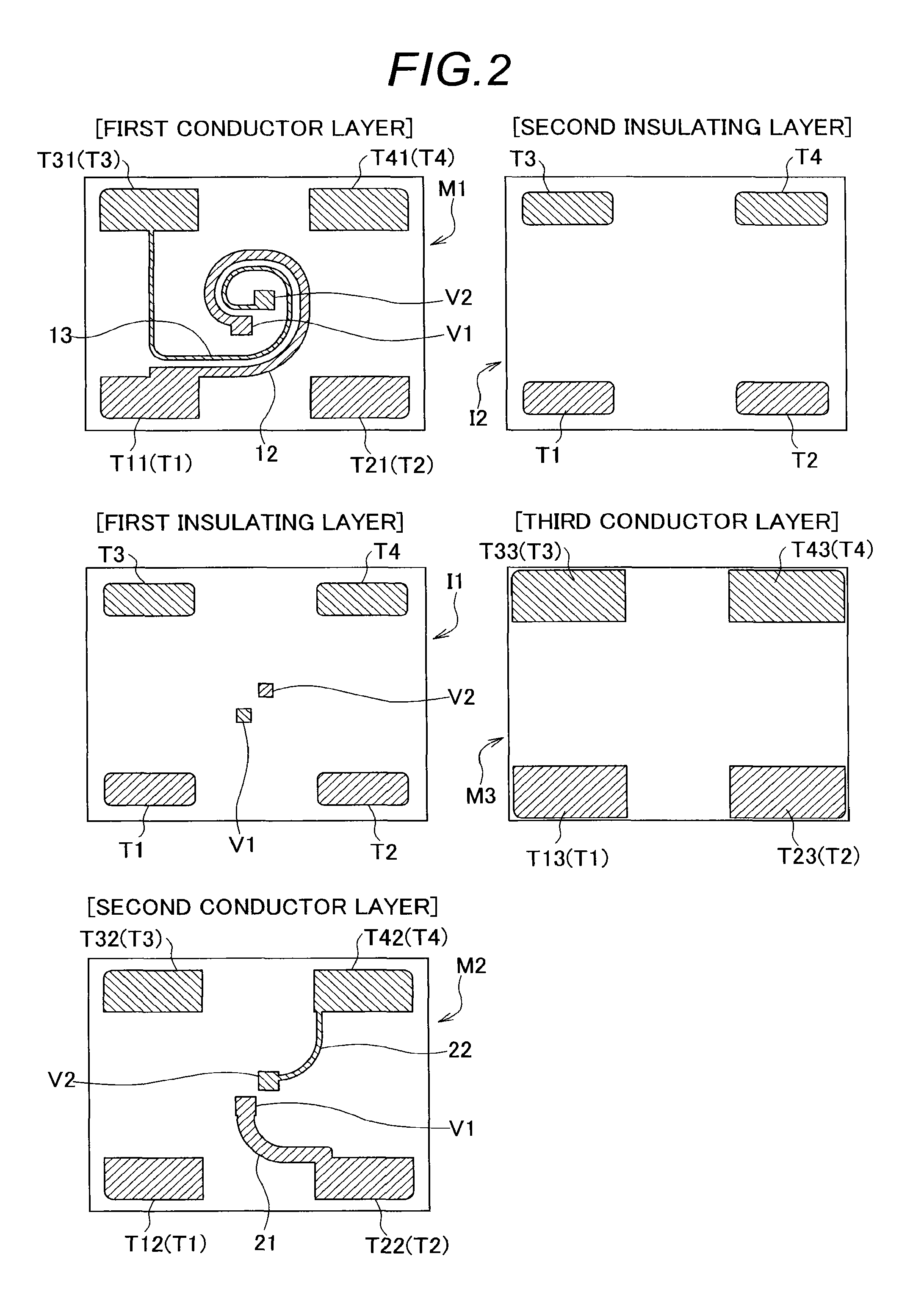Directional coupler and wireless communication device
a wireless communication and coupler technology, applied in the direction of coupling devices, electrical devices, transmission, etc., can solve the problems of significant influence of reflection on the deterioration of characteristics, insertion loss, isolation and directivity deterioration, etc., to prevent reflection
- Summary
- Abstract
- Description
- Claims
- Application Information
AI Technical Summary
Benefits of technology
Problems solved by technology
Method used
Image
Examples
Embodiment Construction
[0036]As illustrated in FIG. 1, a coupler 11 according to one embodiment of the present invention comprises a main line 12 for transmitting a transmission signal, and a sub-line 13 disposed in close proximity to the main line 12 such that electromagnetic coupling is generated therebetween. The main line 12 has an input terminal T1 at one end thereof, and an output terminal T2 at the other end thereof. The sub-line 13 in turn has a coupling terminal T3 at one end thereof, and an isolation terminal T4 at the other end thereof. Also, since these main line 12 and sub-line 13 as well as the respective terminals T1-T4 make up the coupler of this embodiment in the form of one-chip electronic component, they are arranged within a laminate which comprises a plurality of conductor layers laminated with insulating layers interposed between the respective conductor layers.
[0037]Specifically, the laminate has a rectangular geometry, as viewed in plane, as illustrated in FIG. 2, and includes a fi...
PUM
 Login to View More
Login to View More Abstract
Description
Claims
Application Information
 Login to View More
Login to View More - R&D
- Intellectual Property
- Life Sciences
- Materials
- Tech Scout
- Unparalleled Data Quality
- Higher Quality Content
- 60% Fewer Hallucinations
Browse by: Latest US Patents, China's latest patents, Technical Efficacy Thesaurus, Application Domain, Technology Topic, Popular Technical Reports.
© 2025 PatSnap. All rights reserved.Legal|Privacy policy|Modern Slavery Act Transparency Statement|Sitemap|About US| Contact US: help@patsnap.com



